- Vehicle Guide
- Passenger cars
- Estate
- Electric
- 4x4 SUVs
- Suzuki Jimny 4x4
- Dacia Duster 4x4
- Suzuki Vitara 4x4
- Suzuki Vitara auto 4x4
- Dacia Bigster 4x4
- Kia Sportage 4x4 Auto
- Kia Sportage PHEV 4x4 auto
- Mitsubishi Outlander PHEV 4x4 auto
- Toyota Rav4 4x4
- Toyota Rav4 4x4 auto
- Kia Sorento 4x4 auto
- Toyota Landcruiser 150 4x4 auto
- Toyota Landcruiser 250 4x4 auto
- Landrover Discovery 5 4x4 auto
- Landrover Defender 4x4 auto
- Prestige
- Minivans
- 4x4 Camper
- Motorhomes
- Driving in Iceland
- Our services
- Locations & Hours
- Travel Inspiration
- South Iceland: A complete guide
- Reynisfjara Beach in Iceland - Your Guide to a Safe Visit
- Best Times to Visit the Golden Circle in Iceland
- North Iceland: A Complete Guide for Drivers
- East Iceland A Complete Guide for Drivers
- West Iceland The Complete Driver’s Guide
- Your Ultimate Guide to Exploring Iceland’s Ring Road
- Driving the Diamond Circle in Iceland: Your Ultimate Guide
- Driving Iceland's Golden Circle: Your Ultimate Guide
- A 10-Day Itinerary in Iceland: Tips + Ideas
- The Perfect Itinerary for 7 Days in Iceland
- The Best Time to See the Northern Lights in Iceland with a Rental Car
- Renting a Camper in Iceland: The Complete Guide
- Getting to Iceland: A Comprehensive Guide on How to Reach the Land of Fire and Ice
- Nature Bath Locations in Iceland: A Complete Guide
- Iceland with Kids: A 5-Day Self-Drive Itinerary
- Winter Driving in Iceland: A Comprehensive Overview for Foreign Tourists
- The Total Solar Eclipse in Iceland – August 12, 2026
- Exploring Iceland's National Parks on a Self-Drive Adventure
- Exploring Iceland's Wonders: A Comprehensive Guide to Activities and Car Rentals
- Springtime in Iceland – Your Comprehensive Travel Guide
- Exploring Iceland's Most Popular Highland Routes
- The Pearls of Westfjords: The Ultimate Guide
- Exploring Iceland's Hidden Gems | Off-the-Beaten-Path Adventures
- Driving in Iceland in June: Tips for a Safe and Scenic Summer Road Trip
- Driving in Iceland in July: Tips, Routes & Rentals
- Driving in Iceland in August: Late-Summer Freedom on the Open Road
- Guide to Skaftafell Iceland Self-Drive A Journey Through Fire and Ice
- Eco-Friendly Road Trips in Iceland, Sustainable Travel Tips
- Photographer’s Paradise Top Scenic Drives in Iceland for Stunning Shots
- Iceland's Folklore and Legends A Road Trip Through Mythical Sites
- Iceland’s Midnight Sun and How to Make the Most of 24-Hour Daylight
- Exploring Iceland’s Viking Heritage: Top Historical Sites
- Chasing Waterfalls: A Road Trip to Iceland’s Most Spectacular Cascades
- Iceland's Volcanic Wonders: A Self-Drive Tour of Active and Dormant Volcanoes
- Tee Off in the Land of Fire and Ice: A Guide to Golfing in Iceland
- Birdwatching in Iceland: Puffins and Beyond
- Iceland’s Diverse Beaches: Beyond the Black Sands
- Icelandic Horses: The Unique Breed of the North
- Beyond the Ring Road: Iceland’s Hidden Scenic Drives
- Iceland’s Ice Caves: A Year-Round Adventure
- Wildlife Watching in Iceland: Where and When to Go
- Iceland’s Hidden Hot Springs: A Self-Drive Guide to Secret Soaks
- Navigating Iceland’s Weather: What to Expect Each Season
- Tröllaskagi Peninsula: Iceland’s Mountainous Marvel — A Scenic Road Trip with Höldur
- Mastering Iceland's Roundabouts: A Driver’s Guide
- Essential Tips for Renting a Car in Iceland
- Navigating Iceland’s One-Lane Bridges: Your Guide to Safe and Scenic Crossings
- Exploring Iceland’s Film Locations by Rental Car
- 5 Must-Visit Destinations Within Two Hours of Keflavík Airport
- Seasonal Car Rental Tips for Iceland’s Summer Festivals
- Understanding Iceland's F-Roads: How to Drive Safely Into the Highlands
- What Makes Iceland Unique: Top 15 Highlights for an Unforgettable Journey
- Driving and Hiking in Harmony: Explore Iceland's Natural Wonders with Höldur Car Rental
- Best Car to Rent in Iceland?
- Avoiding Common Car Rental Mistakes in Iceland
- Making Your Car Rental in Iceland Child-Friendly: Tips for Stress-Free Family Travel
- Exploring Akureyri, Iceland’s Northern Gem, with EasyJet and Europcar
- Renting a Manual or Automatic Car in Iceland
- Discover the Arctic Coast Way in Iceland with Höldur Car Rental
- How to Save on Fuel Costs During Your Iceland Road Trip
- Electric vs. 4x4 Rentals in Iceland: Which is Right for Your Trip?
- Top Scenic Detours Off Iceland's Ring Road
- Top Safety Tips for First-Time Drivers on Iceland’s Roads
- Cultural Pit Stops Along Iceland’s Ring Road
- Your Guide to Exploring Stuðlagil Canyon by Car: Iceland’s Basalt Beauty Awaits
- Day Trip Ideas From Reykjavik by Rental Car
- Visit Glymur Waterfall: The Ultimate Self-Drive Adventure from Reykjavík
- Discover the Volcanic Wonders of Lake Mývatn by Car
- Discovering the Magic of Snæfellsnes Peninsula by Car
- Your Self‑Drive Guide to Gullfoss Waterfall
- A Guide to Seljalandsfoss Waterfall in Iceland: Explore by Car
- Exploring Reykjanes Peninsula A Self Drive Guide
- Exploring Iceland Landmannalaugar by 4x4
- A Beginner's Guide to River Crossings in Iceland
- Best Car Rental Offers for Iceland’s Summer Adventures
- Your Self‑Drive Guide to Þingvellir National Park
- Your Ultimate Guide to Geysir, Iceland: All You Need to Know
- How to Pay for the Vaðlaheiðargöng Tunnel
- Your Guide to Visiting Jökulsárlón Glacier Lagoon
- The Diamond Beach in Iceland: A Sparkling Wonder Worth Visiting
- Parking fines in Iceland: how to pay and what to do if you receive one
- Where to find overnight parking in Reykjavík: a local’s guide for travellers
- How to park for free in Reykjavík: tips to save on your Iceland trip
- How to pay for parking in Reykjavík - A friendly guide for drivers in Iceland
- Game of Thrones Filming Locations in Iceland: A Self-Drive Guide
- How to Choose the Right Car Rental at Keflavík Airport
- Flying Within Iceland: Your Guide to Domestic Routes and Regional Airports
- Top 3 Must-See Attractions on Iceland's Golden Circle
- Hidden Gems Along the Golden Circle Route
- Your Essential Guide to Iceland: Currency, Culture, and Car Rental Tips
- How to Plan the Perfect Golden Circle Self-Drive Tour
- The Comprehensive Guide to Rental Car Sizes at Keflavik Airport
- Húsafell & Hallmundarhraun: Hidden Lava Field Adventures by Car
- Iceland Weather by Month: What to Expect and How to Drive Safely with Holdur Car Rental
- A Guide to Iceland’s Quirky Roadside Attractions
- Exploring Iceland’s Lava Tubes | Self-Drive Cave Adventures with Höldur Car Rental
- Coolcation in Iceland: Self-Drive Your Summer Escape to the North
- Driving Iceland’s Coastal Roads: A Guide to Lesser-Known Peninsulas
- Top Tips for Driving in Iceland Safely Year-Round
- The Best Rest Stops and Viewpoints Along Iceland's Ring Road
- Driving in Iceland in September: Embrace the Autumn Adventure
- Your Guide to Exploring Fjaðrárgljúfur – South Iceland’s Fairytale Canyon
- Explore Reykholt on a Self-Drive Tour in Iceland
- How to Choose the Right Insurance for Your Iceland Car Rental
- Hiking Múlagljúfur Canyon: Iceland’s Hidden Gem You Can’t Miss
- Understanding Iceland's Weather and How It Affects Driving Conditions
- Dyrhólaey: A Complete Self-Drive Guide to Iceland's Breathtaking South Coast
- Where to See Iceland’s Tectonic Plates Up Close
- Scenic Journey on Kjalvegur Road 35 Reykjavik to Akureyri
- Guide to Visiting Svartifoss with a Rental Car
- Kerið Crater Lake in Iceland: A Self-Drive Guide
- Your Complete Guide to Stokksnes, Iceland with a Rental Car
- Hengifoss Waterfall in Iceland: The Ultimate Self-Drive Guide
- Your Complete Guide to Visiting Skógafoss Waterfall with a Rental Car
- Into the Heart of Þórsmörk: Iceland’s Valley of Thunder
- Dynjandi Waterfall in Iceland: The Ultimate Self-Drive Guide
- Visiting Ásbyrgi Canyon in North Iceland by Car: A Complete Self-Drive Guide
- Driving in Iceland in October: Embrace the Autumn Transition
- Hraunfossar: Iceland’s Hidden Gem for Self-Drive Travellers
- Barnafoss Waterfall: Iceland’s Raging Cascade with a Legend
- Driving in Iceland in November: Your Complete Guide to a Spectacular Autumn Adventure
- Fishing in Iceland: All You Need to Know
- Öxarárfoss Waterfall in Iceland: A Self-Drive Guide with Höldur
- Life in Iceland: Essential Guide to Living in the Land of Fire and Ice
- People of Iceland - 12 Fun Facts About Icelanders
- Glaumbær Turf Houses: A Self-Drive Guide to Iceland’s Living History
- Húsavík: Whale Watching Capital of Iceland
- Svínafellsjökull Glacier: A Self-Drive Guide to Iceland’s Ice Giants
- Kirkjubæjarklaustur: A Historic South Coast Gem
- Vík í Mýrdal: South Iceland’s Coastal Treasure
- Namaskard: A Self-Drive Guide to Iceland’s Geothermal Wonderland
- Laufás Heritage Site: Where Iceland’s Past Lives On
- Navigating Iceland's Gravel Roads: Tips for a Safe and Smooth Drive
- Iceland's Best Stargazing Spots for Self-Drive Travellers
- Iceland's Best Picnic Spots: Scenic Stops for Self-Drive Adventures
- Top 5 Family-Friendly Hiking Trails Accessible by Rental Car
- 15 Tips for Travelling to Iceland
- How to Plan a Winter Photography Road Trip in Iceland
- Visiting Gljúfrabúi Waterfall — A Self-Drive Guide
- How to Spot Puffins in Iceland: A Self-Drive Adventure
- Your Essential Guide to Winter Tyres and Safe Driving in Iceland
- Iceland’s Most Active Volcanoes: A Self-Drive Guide
- Iceland’s Most Scenic Bridges and River Crossings: A Self-Drive Guide
- Iceland’s Most Instagrammable Spots for Self-Drive Travellers
- How Cold Is It in Iceland During Winter? A Self-Drive Guide
- Explore Dimmuborgir: A Self-Drive Guide to Iceland's Dark Castles
- The Ultimate Guide to Iceland’s Top 5 Waterfalls by Car
- Iceland’s Best Scenic Routes for Autumn Foliage: A Self-Drive Guide
- The Best Time to Visit Iceland for Self-Drive Travellers
- Self-Drive Adventures to Iceland’s Remote Lighthouses
- Selfoss Waterfall Self-Drive Guide: Explore Iceland Your Way
- All About the Icelandic Sheep
- Vestrahorn: A Self-Drive Guide to Iceland’s Stokksnes Peninsula
- Höfn, Iceland: The Lobster Town Self-Drive Guide
- Exploring Arnarstapi: A Self-Drive Guide
- A Guide to Iceland's Seasonal Foods for Your Road Trip
- Hverfjall Crater, Iceland: A Self-Drive Guide
- Self-Drive Guide to Visiting Askja
- A Self-Drive Guide to Visiting Kerlingarfjöll
- A Self-Drive Guide to Gunnuhver Geothermal Area
- Skriduklaustur, Iceland: A Self-Drive Guide to History & Culture
- Your Ultimate Guide to Visiting the Blue Lagoon in Iceland
- Borgarnes, Iceland: Top Things to Do & Self-Drive Guide
- A Guide to Glaciers in Iceland
- Car Rental Insurance in Iceland: What’s Usually Included, What’s Not & How to Choose
- Best Car Models for Iceland’s Terrain: Recommendations by Route
- Solo Traveller’s Guide to Self-Driving in Iceland
- Exploring Iceland’s Arctic Circle: What to See and Do
- How to Plan a Budget-Friendly Road Trip in Iceland
- The History of Iceland’s National Day: A Self-Drive Celebration
- Where to Spot Whales in Iceland: A Self-Drive Guide
- The Diamond Circle vs. The Golden Circle: Which Route is Right for You?
- Embracing a Greener Journey: Sustainability in Iceland
- Granni: A Self-Drive Guide to Iceland’s Neighboring Waterfall
- Háifoss: A Self-Drive Guide to Iceland’s Tallest Waterfall
- Iceland's Best Camping Spots for Road Trippers
- Gjáin: A Self-Drive Guide to Iceland’s Hidden Oasis
- Iceland's Hidden Waterfalls: Beyond the Tourist Trails
- Hjálparfoss: A Self-Drive Guide to Iceland’s Helping Falls
- Seasonal Self-Drive Itineraries in Iceland: What’s Open When?
- Kirkjufell: A Self-Drive Guide to Iceland’s Most Photographed Mountain
- Fjallabak Nature Reserve: A Self-Drive Guide to Iceland’s Rugged Highlands
- Hrafntinnusker: A Self-Drive and Hiking Guide to Iceland’s Obsidian Wilderness
- When to Visit Iceland: Northern Lights and Ice Caves vs. Hiking and Highland Adventures
- Visiting Laugarvatn Fontana Spa with a Rental Car: A Relaxing Icelandic Getaway
- Hvítserkur Rock: A Self-Drive Guide to Iceland’s Dragon of the North
- Skiing in Iceland: A Self-Drive Guide for Winter Adventurers
- Visiting the Mývatn Nature Baths by Car: A Self-Drive Guide
- Visiting Vök Baths in East Iceland: A Self-Drive Guide
- Visiting Skútustaðir Pseudo-Craters: A Self-Drive Guide
- Visiting Hljóðaklettar: A Self-Drive Guide on the Diamond Circle
- The Ultimate Guide to Exploring Reykjavik with a Rental Car
- Visiting Seljavallalaug: A Hidden Gem in South Iceland
- Guide to Sólheimajökull Glacier by Iceland Car Rental
- Eyjafjallajökull: Iceland’s Glacier Volcano
- Ísafjörður, Iceland: Your Ultimate Self-Drive Guide to the Westfjords
- What Continent is Iceland In? A Traveler's Guide
- Katla Volcano: A Guide to Iceland's Sleeping Giant
- The Magic of Icelandic Water: A Traveler's Guide
- A Guide to Exploring Akureyri by Rental Car
- A Self-Drive Guide to the Krafla Volcanic Region
- 12-Day Iceland Self-Drive: The Complete Itinerary
- Hekla Volcano: A Self-Drive Guide to Iceland's Gateway
- Visiting Deildartunguhver: A Self-Drive Guide to Europe’s Most Powerful Hot Spring
- Exploring Borgarfjörður: A Self-Drive Guide to West Iceland
- Exploring Stórurð: A Self-Drive and Hiking Guide to East Iceland
- Visiting the Forest Lagoon in North Iceland: A Self-Drive Guide
- Driving in Iceland in December: Embrace the Winter Wonderland
- Exploring Grábrók: A Self-Drive Guide to Iceland’s Volcanic Crater
- Exploring Látrabjarg: A Self-Drive Guide to Iceland’s Westernmost Point
- Iceland Car Hire Tips for UK Drivers: What You Need to Know
- 4-Day Iceland Winter Itinerary: The Best of the South
- Mount Mælifell: Iceland’s Emerald Volcano
- How Long to Drive Around Iceland? A Self-Drive Guide
- Driving in Iceland in January
- Exploring Djúpavík: A Self-Drive Guide to Iceland’s Remote Westfjords
- What to Wear in Iceland: Tips for Every Season
- Things to Do in Stykkishólmur: A Self-Drive Adventure Through Iceland’s Magical West
- The Secret Lagoon: Iceland’s Hidden Gem of Relaxation and Discovery
- The Silver Circle of Borgarfjörður: Your Ultimate Self-Drive Guide
- Snæfellsjökull: A Journey to Iceland’s Glacier of Legends
- Car Rental Iceland 4x4: Best 4WD Options for Your Trip
- What to See in Iceland: 20 Places You Don’t Want to Miss
- How to Prepare for an Iceland Road Trip
- Your Guide to Visiting Fagrifoss Waterfall by Car
- Exploring Stakkholtsgjá Canyon: A Self-Drive Adventure in Iceland
- Kolugljúfur Canyon: A Guide to Iceland's Hidden Gem
- Exploring Kvernufoss: A Hidden Gem in South Iceland
- Skógar Museum: A Journey Through Iceland's History
- 2 Days in Iceland: The Perfect Itinerary
- Exploring Berserkjahraun: A Self-Drive Guide to Iceland’s Lava Fields
- Driving in Iceland in February: Your Complete Guide
- Iceland Daylight Hours by Month: Planning Your Trip
- Petra’s Stone Collection: A Self-Drive Gem in East Iceland
- Iceland's New Kilometer-Based Road Tax: Everything You Need to Know
- Krýsuvíkurbjarg Cliffs: Self-Drive Guide to Iceland’s Wild Coast
- Brimketill: The Reykjanes Peninsula’s Natural Lava Pool
- Exploring Eldhraun Lava Field: A Self-Drive Guide to Iceland’s Volcanic Marvel
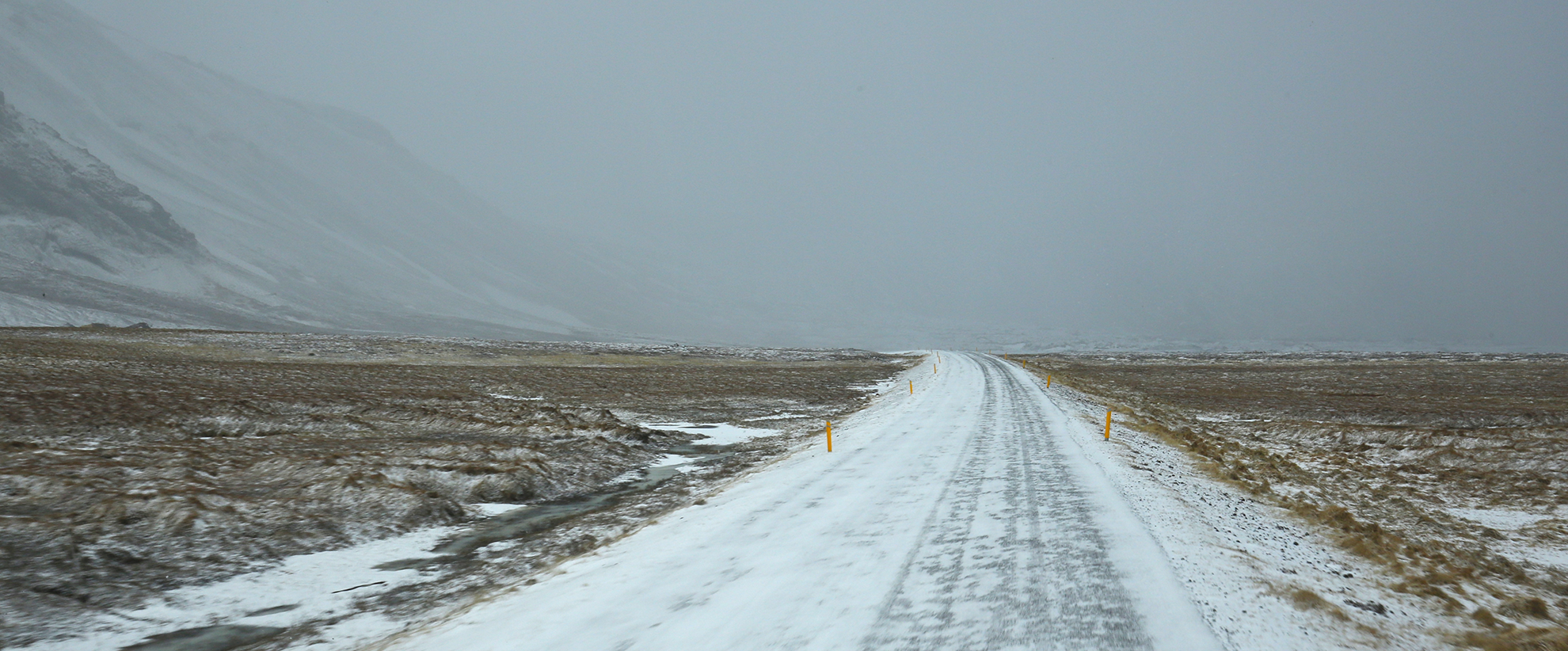
Car Rental Tips, Iceland weather
Understanding Iceland's Weather and How It Affects Driving Conditions
22.08.2025
Iceland's weather is as legendary as its landscapes—and for good reason. From howling winter gales to the gentle warmth of midnight sun, the country's climate shapes every aspect of travel, especially when you're behind the wheel. Whether you're planning to hire a car in Iceland for the first time or you're a seasoned traveller looking to better understand seasonal driving conditions, this comprehensive guide will equip you with the knowledge you need for safe, enjoyable exploration.
At Höldur Car Rental, we've been helping visitors navigate Iceland's roads since 1966. Over the decades, we've seen how weather awareness can transform a journey from stressful to spectacular. Understanding Iceland's seasonal weather patterns isn't just about comfort—it's about making informed decisions that keep you safe whilst maximising your adventure.
See also: Iceland Weather by Month: What to Expect and How to Drive Safely with Holdur Car Rental.
Iceland's Unique Climate: What Makes It Different
Iceland sits between two major weather systems: the Greenland Sea's polar maritime climate and the North Atlantic's temperate oceanic influence. This positioning creates a dynamic, ever-changing atmosphere where conditions can shift dramatically within hours.
The Gulf Stream's warming effect prevents Iceland from becoming as frigid as its latitude might suggest, but it also brings unpredictability. Coastal areas experience milder temperatures than inland regions, whilst mountainous terrain creates microclimates that can catch unprepared drivers off guard.
For car rental customers, this means flexibility and preparation are essential. The vehicle that's perfect for July's highland adventures might be wholly unsuitable for January's icy challenges around Reykjavík or when driving from Keflavik International Airport.
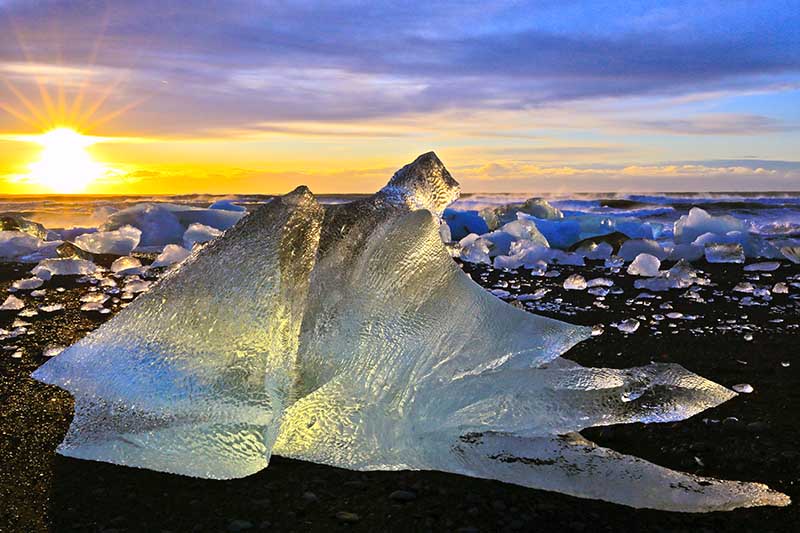
Spring (March-May): Awakening Roads and Shifting Conditions
March: Winter's Last Stand
March represents Iceland's most unpredictable driving month. Temperatures hover between -2°C and 3°C, with daylight extending from 10 to 11 hours. Snow remains common, particularly inland, but coastal areas begin showing signs of spring.
Driving Challenges:
- Black ice formation during temperature fluctuations
- Limited visibility during sudden snowstorms
- Muddy conditions as snow melts
- Unpredictable road surface changes
Vehicle Recommendations: Four-wheel drive with winter tyres remains essential. Höldur's winter-equipped vehicles include studded tyres and enhanced safety features specifically designed for these transitional conditions.
April: The Great Thaw
April brings noticeable improvements, with temperatures rising to 0°C-6°C and daylight extending to 13-16 hours. This is Iceland's shoulder season—fewer tourists but still challenging conditions.
Driving Opportunities:
- Ring Road becomes more accessible
- Better visibility for sightseeing
- Reduced risk of severe weather delays
Considerations: Highland F-roads remain closed, and potholes become more apparent as snow clears. This is an excellent time for car hire in Iceland if you're seeking quieter roads and don't mind variable conditions.
May: Road Trip Renaissance
May transforms Iceland into a driver's paradise. With temperatures reaching 3°C-10°C and up to 18 hours of daylight, this month offers exceptional driving conditions without summer's crowds.
Advantages for Drivers:
- Excellent road surface conditions
- Extended daylight for longer journeys
- Stunning scenery as landscapes turn green
- Ideal weather for both economy and premium vehicle options
Many experienced travellers consider May the secret sweet spot for car rental in Reykjavík, offering summer-like accessibility with spring's tranquillity.
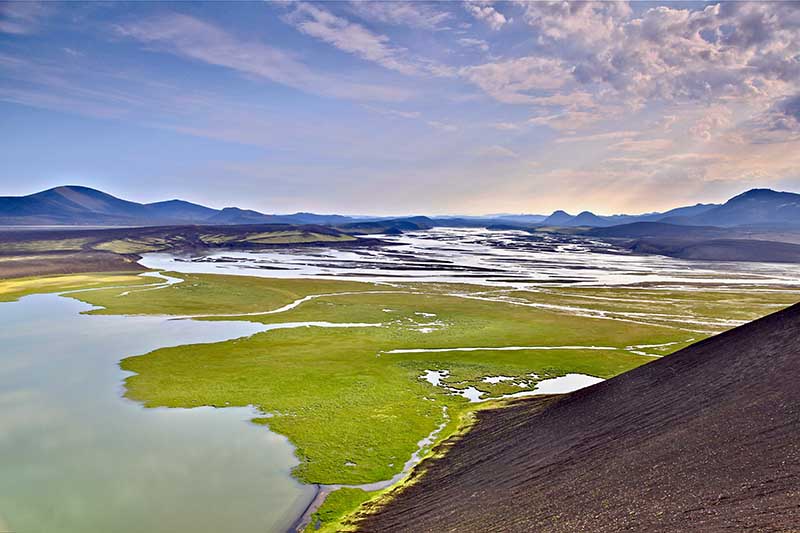
Summer (June-August): Peak Driving Season
June: Midnight Sun Arrives
June marks Iceland's official driving season, with temperatures ranging from 7°C-13°C and 24-hour daylight in northern regions. This is when highland roads begin opening, expanding your rental car's potential.
Summer Driving Benefits:
- All major roads accessible
- Dry conditions predominate
- Optimal visibility for landscape photography
- Perfect weather for campervan hire
Booking Considerations: June sees increased demand for car rental at Keflavik International Airport. Early reservations ensure better vehicle selection and competitive rates.
July: Peak Performance
July offers Iceland's most stable weather, with temperatures reaching 10°C-15°C. This is the ideal month for first-time visitors or those planning extensive highland exploration.
Highland Access: F-road openings make four-wheel drive vehicles particularly valuable.
Traffic Considerations: Popular routes experience higher traffic volumes. Plan extra time for iconic stops like the Golden Circle or South Coast attractions.
August: Late Summer Excellence
August maintains excellent driving conditions (8°C-14°C) whilst offering slightly quieter roads than July. Highland routes remain accessible, but increased rainfall affects gravel road conditions.
Strategic Advantages:
- Continued highland access
- Beginning of autumn colours
- Reduced accommodation pressure
- Excellent conditions for extended road trips

Autumn (September-November): Dramatic Transitions
September: Golden Hour Driving
September brings some of Iceland's most spectacular driving conditions. With temperatures at 6°C-10°C and 12 hours of daylight, this month offers crisp visibility and stunning photographic opportunities.
Unique Opportunities:
- Northern Lights season begins
- Autumn colours at their peak
- Reduced tourist numbers
- Excellent road surface conditions
Weather Watching: Early snowfall can occur on mountain passes. Flexible itineraries and weather monitoring become more important.
October: Preparing for Winter
October signals Iceland's transition to winter driving conditions. Temperatures drop to 2°C-7°C, and daylight reduces to 9-11 hours. Highland roads begin closing for the season.
Driving Adaptations Required:
- Winter tyre regulations take effect
- Increased focus on daylight driving
- Weather condition monitoring becomes critical
- Route flexibility essential
November: Winter's Return
November brings Iceland's challenging driving season, with temperatures dropping to -2°C-3°C and only 6-7 hours of daylight. Snow begins settling across most regions.
Safety Priorities:
- Studded winter tyres become mandatory
- Reduced driving distances due to daylight limitations
- Enhanced vehicle preparation requirements
- Increased importance of local weather updates
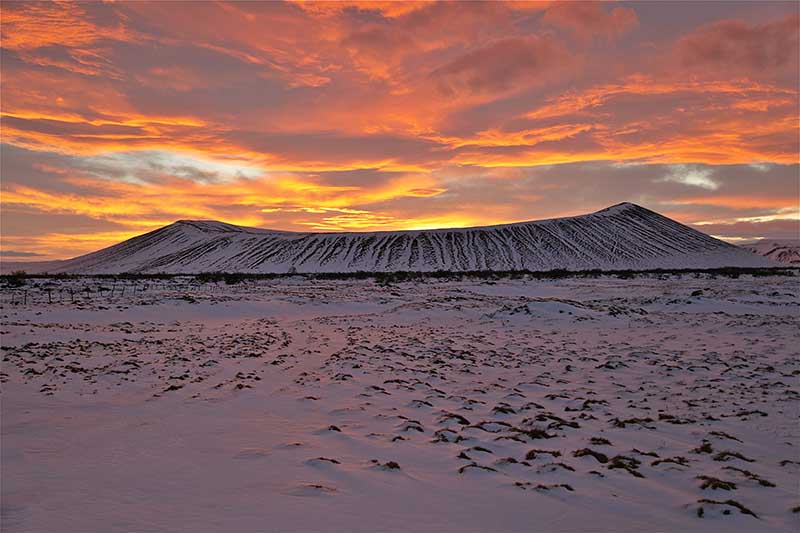
Winter (December-February): Mastering Challenging Conditions
December: Winter Wonderland Driving
December presents Iceland's most challenging driving conditions but also some of its most magical experiences. Temperatures range from -3°C to 2°C with only 4-5 hours of daylight.
Winter Driving Excellence:
- Höldur's winter-equipped vehicles include heated seats and comprehensive winter tyre systems.
- GPS systems available for planning winter routes
- 24/7 customer support for weather-related assistance
January: Deep Winter Navigation
January represents Iceland's harshest driving conditions. Snow dominates landscapes outside Reykjavík, and frequent snowstorms create low visibility situations.
Professional Recommendations:
- Limit driving to main routes
- Maintain constant communication with weather services
- Choose four-wheel drive vehicles with comprehensive winter equipment
- Plan shorter daily distances
February: Winter's Peak Challenge
February continues January's harsh conditions but with slowly increasing daylight (up to 7 hours by month's end). Northern Lights viewing opportunities remain excellent for evening drivers.
Regional Weather Variations and Driving Impact
Iceland's geography creates distinct regional weather patterns that significantly affect driving conditions:
Reykjavík and Southwest: Generally milder conditions due to coastal proximity and urban heat island effects. Best year-round driving accessibility.
North Coast: More extreme temperature variations and increased snowfall. Winter driving requires enhanced preparation.
East Coast: Higher precipitation and stronger winds, particularly during transitional seasons.
Westfjords: Most challenging winter conditions with potential road closures due to snow accumulation.
Highlands: Seasonal access only (June-September), requiring four-wheel drive vehicles.
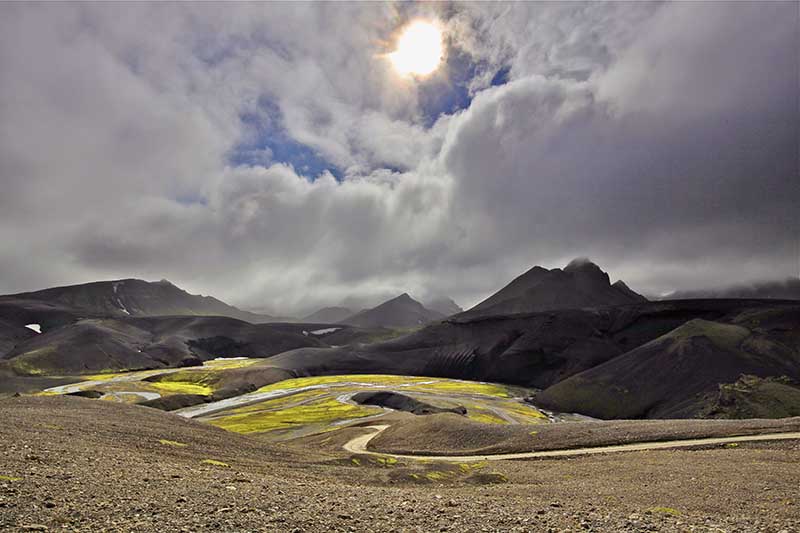
Weather-Related Safety Considerations for Car Rental
Tyre Requirements and Regulations
Iceland mandates winter tyres from October 1st through April 15th. Studded tyres are permitted from November 1st through April 15th. Höldur ensures all rental vehicles comply with seasonal requirements, with studded winter tyres standard on appropriate vehicles during winter months.
Vehicle Selection Guidelines
Summer Conditions (May-September): Economy vehicles suitable for Ring Road travel; four-wheel drive recommended for highland access.
Winter Conditions (October-April): All-wheel drive minimum recommendation; four-wheel drive essential for rural routes.
Transitional Periods: Enhanced weather monitoring and flexible vehicle options provide optimal safety margins.
Advanced Weather Monitoring for Drivers
Successful Iceland driving requires constant weather awareness. Key resources include:
Vedur.is: Iceland's official weather service providing detailed forecasts and warnings.
Road.is (Umferdin.is): Real-time road condition updates and closure notifications.
SafeTravel.is: Comprehensive safety information and travel planning resources.
See also: What to know about driving in Iceland.
Seasonal Cost Considerations
Understanding Iceland's weather patterns helps optimize rental costs:
Peak Season (June-August): Highest rates but best conditions and full route access.
Shoulder Seasons (April-May, September-October): Moderate rates with good conditions but limited highland access.
Winter Months (November-March): Lowest rates but challenging conditions requiring specialized vehicles.
Environmental Weather Impacts
Iceland's weather significantly affects environmental conditions that impact driving:
Geothermal Activity: Increased during winter months, creating localized road surface variations.
Glacial Runoff: Peak during summer, affecting river crossings and highland routes.
Volcanic Activity: Weather conditions influence volcanic ash dispersal patterns, occasionally affecting visibility and air quality.
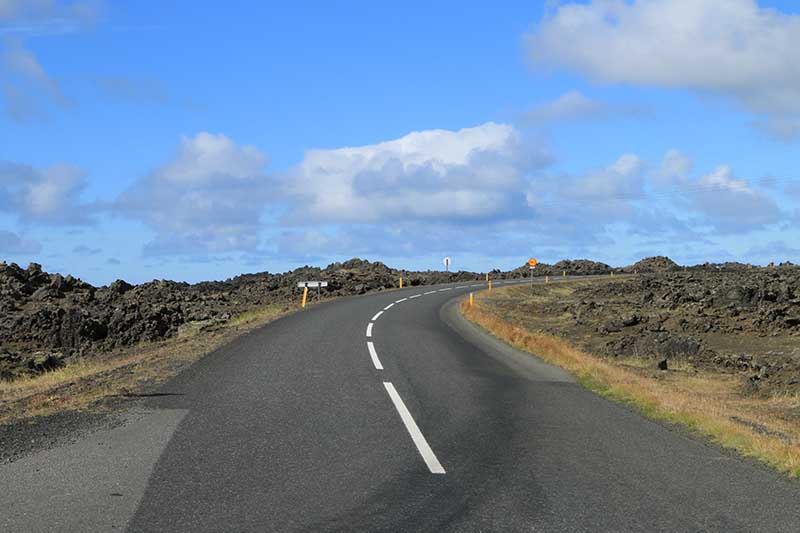
Frequently Asked Questions
What's the most dangerous weather condition for driving in Iceland?
Black ice presents the greatest risk, particularly during temperature fluctuations in spring and autumn. It forms invisibly on road surfaces and can cause vehicles to lose control suddenly. Höldur's winter-equipped vehicles include studded tyres specifically designed to maintain traction on icy surfaces.
How far in advance should I check weather conditions before driving?
Check conditions the evening before travel and again immediately before departure. Iceland's weather can change rapidly, and conditions may vary significantly between regions. We recommend monitoring vedur.is and road.is continuously during your journey.
Are there specific months when car rental is not recommended?
Car rental is safe year-round with proper preparation and appropriate vehicles. However, December through February require enhanced caution, winter driving experience, and flexibility with itineraries. First-time winter visitors often benefit from guided driving orientations.
How do highland weather conditions differ from coastal areas?
Highland areas experience more extreme temperature variations, increased precipitation, and stronger winds. Weather can change from clear to dangerous within minutes. Highland driving is only recommended during summer months (June-September) with four-wheel drive vehicles.
What should I do if caught in a sudden weather change whilst driving?
Pull over safely, turn on hazard lights, and wait for conditions to improve. In case of emergency contact Höldur's 24/7 support for assistance. Never attempt to drive through conditions that compromise visibility or vehicle control. Most weather events pass within 30-60 minutes.
How does Iceland's weather affect electric vehicle performance?
Cold weather reduces electric vehicle range by 20-40%. Winter heating systems drain batteries faster, and charging times increase in extreme cold. Höldur's electric vehicles include cold-weather packages and enhanced battery management systems. We provide detailed range planning assistance for electric vehicle rentals.
What's the best weather app for driving in Iceland?
Vedur.is (Iceland Met Office) provides the most accurate local forecasts. We also recommend the Höldur App for real-time weather alerts. There you an also book activities and secure entry to popular lagoons and nature baths.
How do weather conditions affect vehicle insurance considerations?
Weather in Iceland is notoriously variable—sun, rain, sleet, snow, and gusty winds can all occur in a single day. Given this reality, standard insurance options like Collision Damage Waiver (CDW), Personal Accident Insurance (PAI), and Theft Protection may leave you exposed to common weather-related risks. Consider upgrading to Premium Protection, which specifically covers damage from gravel, sand, and ash—common hazards during dust storms or on Iceland’s unpaved roads. This package also offers zero excess protection to reduce your out-of-pocket costs. Read all about our insurance options here.

Conclusion: Weather Wisdom for Iceland Adventures
Understanding Iceland's weather patterns transforms driving from a challenge into an opportunity. Each season offers unique rewards for prepared travellers: spring's awakening landscapes, summer's accessible highlands, autumn's dramatic colours, and winter's otherworldly beauty.
At Höldur Car Rental, we believe weather knowledge is safety knowledge. Our six decades of experience helping travellers navigate Iceland's roads has taught us that the right preparation, appropriate vehicle selection, and flexible planning create the foundation for extraordinary adventures.
Whether you're collecting your car rental from Keflavik International Airport for a week-long Ring Road adventure or picking up a vehicle in Reykjavík for highland exploration, understanding Iceland's weather ensures you'll have the confidence to embrace whatever conditions await.
Your Icelandic journey begins with weather wisdom and continues with the perfect vehicle for your adventure. Let Höldur's expertise guide you towards safe, memorable exploration of Iceland's incredible landscapes.





